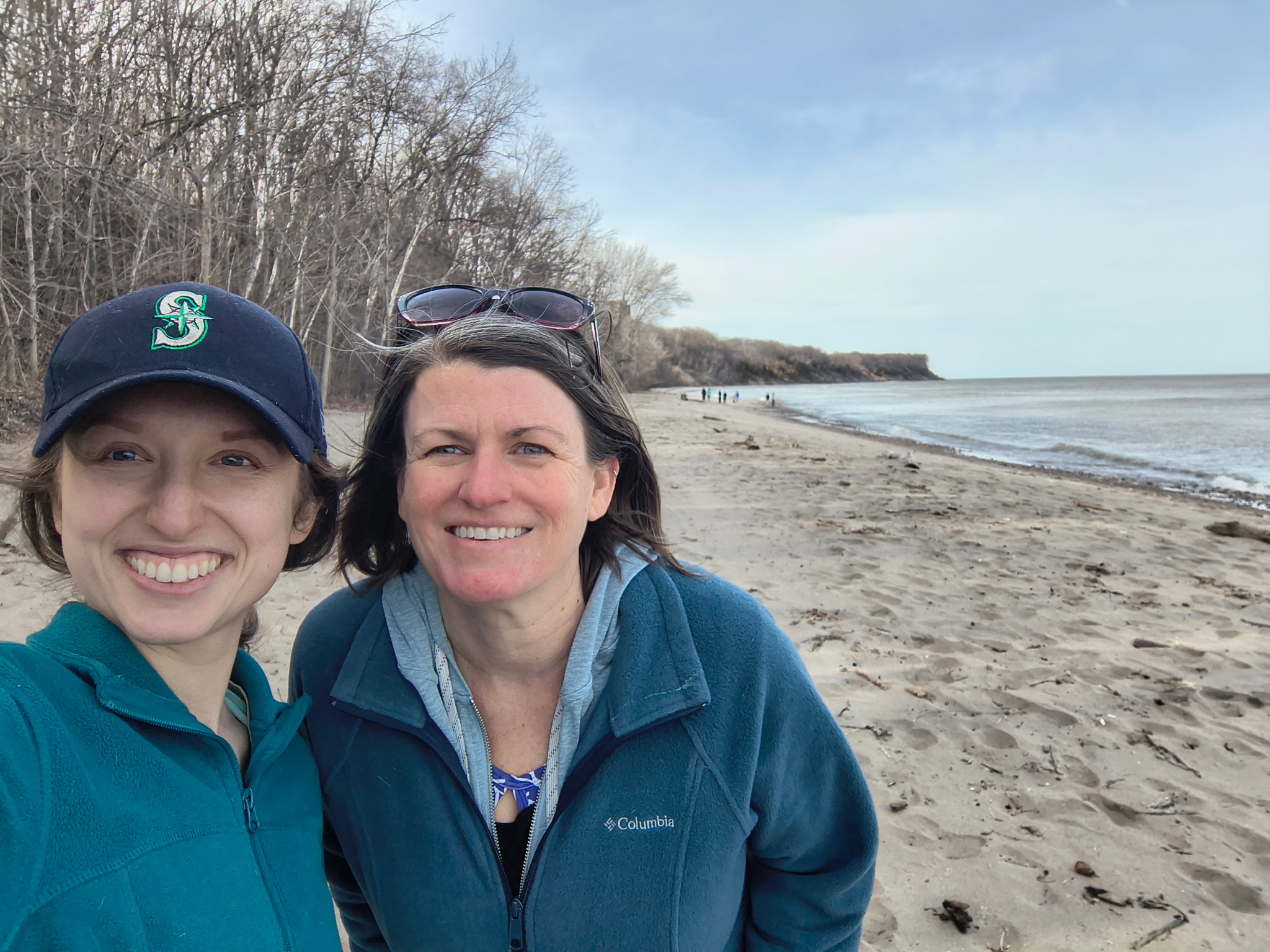If you’re a dolphin in Sarasota Bay just south of Tampa, Fla., and want to avoid a shark bite, it’s best to stick to the sea grass, stay in shallower water and live in a large group. You’ll want to steer clear of deeper water and open bay habitat.
These insights into saltwater animals are thanks to a student from freshwater Middleton, Wis. When Krystan Wilkinson was eight, she read a book about Eugenie Clark, a shark researcher and founding director of the Mote Marine Laboratory in Florida. The “Shark Lady” story sparked Wilkinson’s early interest in sharks. But it took a combination of time, opportunity and place for her to pursue that interest.
Along the way, Wilkinson worked for Wisconsin Sea Grant as a GIS intern under the tutelage of David Hart, assistant director of extension. She had completed her undergraduate degree from the University of Wisconsin-Madison in zoology and biological aspects of conservation, and was working on a GIS Capstone Certificate, which required an internship. With Hart, Wilkinson examined shoreline erosion in Ozaukee County north of Milwaukee and made the results accessible to teachers through tools such as Google Earth.
Wilkinson’s skills and drive impressed Hart, who recalls her interest in marine biology. “I remember Krystan planning to move to Florida to pursue her interest and hoping an opportunity would arise.”
Then an internship opened up with the Sarasota Dolphin Research Program, which is part of the Chicago Zoological Society and is based at Mote Marine Lab. Wilkinson applied and was accepted, in part because of her new proficiency. “My GIS skills were one of the key things my advisors and employers in Florida were excited that I had. That program helped me a lot,” Wilkinson said.
Three weeks later, in January 2011, she packed and left winter in Wisconsin for the shore of Florida. “I knew I had to be by the coast to do marine species work, so I was ready to go,” Wilkinson said. “Everything just opened up at the right time. It was perfect.”
After her internship, Wilkinson began working with the Spotted Eagle Ray Conservation Program at Mote Marine Lab and continued her studies through the University of Florida in Gainesville with a master’s in wildlife ecology and conservation. She finished this past summer with her thesis: “An Analysis of Shark Bites on Resident Bottlenose Dolphins (Tursiops truncatus) in Sarasota Bay, Florida and Implications for Habitat Use,” which is where she described the handy tips for dolphins mentioned previously.
To round things out, she is now in a Ph.D. program in fisheries and aquatic sciences, also through the University of Florida. She is still putting
her GIS capabilities and interest in sharks and other marine species to good use, focusing on the habitat use and distribution of bull sharks and dolphins in Sarasota Bay.
In fact, Wilkinson ran into Hart at an Environmental Systems Research Institute Ocean GIS Forum last November. “It was an exciting coincidence,” Hart said. “We shared what we were working on, and presented in the same session.”
Although it looks like Wisconsin has lost Wilkinson to Florida, her heart and family remain here. “I love Wisconsin. If Wisconsin didn’t have winters and it had an ocean, I probably never would have left,” she said. And she is appreciative of the support she gained from working with Sea Grant. “I was lucky to have the opportunity to work with Wisconsin Sea Grant and David Hart. He was a great advisor – super supportive. And that’s so helpful when you’re still learning things.”





